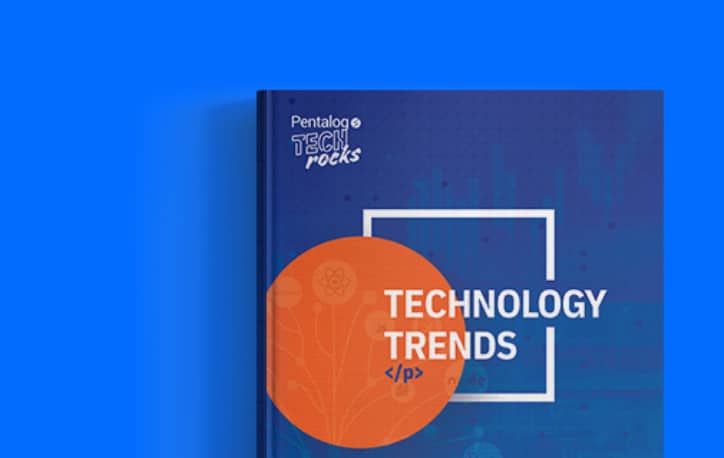Last Updated on November 26, 2025
What if your data didn’t have to travel halfway across the world to be useful? In a world run by smart devices—where everything from fridges to factories generates data by the second—waiting for cloud servers to process information just isn’t fast enough anymore.
That’s why tech leaders like Amazon, Microsoft, and IBM are betting big on edge computing: a powerful shift in how we handle and store data. Instead of routing everything through distant data centers, edge computing moves processing to right where the data is created, enabling decisions to happen on-site instantly.
And the best part? It’s not just faster, it’s also safer, leaner, and more cost-effective than you think.
What Is Edge Computing?
Edge computing is a distributed model of data processing where computation occurs close to the data source – on local devices, gateways, or nearby servers – rather than in distant data centers or a centralized cloud environment.
This localized approach reduces latency, speeds up analysis, and enables immediate response.
For example, a factory machine sensors detecting unusual equipment vibration can trigger maintenance protocols immediately, without waiting on a round-trip to the cloud.
By processing data at or near its source, edge computing not only speeds up the process but also enhances its reliability and efficiency.
At its core, edge computing allows organizations to:
- Respond to data in real time
- Reduce dependency on internet connectivity
- Improve resilience in remote or bandwidth-constrained environments
- Filter, prioritize, and clean data before it ever leaves the site
It’s important to remember that edge computing is not a replacement for cloud infrastructure, but a powerful extension that decentralizes processing for speed, efficiency, and relevance.
Why the Cloud Can’t Do It All Alone Anymore: The Limits of Traditional Data Management
Traditional data management relies heavily on centralized cloud computing. This model has powered much of the digital transformation over the last decade. But as data volumes explode, and real-time data becomes more central to operations, the cracks are showing.
Key limitations of traditional cloud-based data management include:
1. High Latency
Transmitting data across long distances introduces delays. In applications that require real-time responses, like autonomous vehicles, telemedicine, or industrial automation, this delay can be the difference between success and failure.
2. Bandwidth Bottlenecks
As more devices come online and generate data, the strain on internet bandwidth increases. Constantly sending large volumes of raw data to the cloud also increases the cost, making the process expensive.
3. Data Security and Privacy Risks
Centralized systems can become prime targets for cyberattacks. Moving sensitive data across networks increases the risk of breaches and compliance issues, especially in regulated industries like healthcare and finance.
4. Unreliable Connectivity in Remote or Mobile Environments
Many environments, like remote locations and moving vehicles, can’t always count on stable, high-speed internet. Relying on just the cloud in such areas leads to slow performance, downtime, and limited functionality.
5. Rising Operational Costs
Storing and processing massive volumes of data in the cloud can be costly, especially for businesses that need 24/7 uptime and low-latency solutions. This can make the process financially unsustainable for many use cases.
These challenges have created a need for a more responsive, efficient, and secure approach, leading to the rapid adoption of edge computing solutions as a complementary solution.
How Edge Computing Resolves These Limitations
Edge computing directly addresses the pain points of traditional cloud infrastructure by pushing intelligence to where data is created. It:
- Eliminates round-trip delays and enables real-time decisions
- Cuts bandwidth use and improves its efficiency by filtering data at the source
- Supports operations in offline or bandwidth-limited environments
- Helps organizations control sensitive data before it ever leaves the premises
- Reduces operational costs by limiting unnecessary cloud storage and compute usage
In short, edge data architecture makes systems more responsive, scalable, and secure.
Core Elements of Edge Data Management
Edge computing is not just about moving data processing closer to where it’s generated – it’s about building an intelligent, secure, and scalable infrastructure that supports real-time operations and minimizes reliance on centralized systems. Effective edge data management relies on several core components. These include:
1. Localized Data Processing
One of the primary drivers of edge computing solutions is the ability to process data directly at or near its source. Whether it’s a manufacturing sensor or a retail kiosk, localized processing enables faster insights and immediate actions.
By analyzing data locally at the edge, organizations can improve responsiveness and operational outcomes, as decisions are made in real time based on immediate information.
2. Data Filtering and Prioritization
Edge systems often generate massive volumes of data. However, not all of it is useful. Smart edge platforms are designed to filter, analyze, and prioritize data at the point of collection, ensuring only essential information is transmitted to central systems or stored long-term. By transmitting only critical data to the cloud, these platforms reduce unnecessary network traffic, enhance data privacy, and improve overall efficiency.
3. Built-in Storage Capabilities
Edge devices are equipped with localized storage to retain data temporarily or persistently. This is crucial in scenarios where network connectivity is inconsistent; it allows edge servers to continue functioning and later sync with central repositories when back online.
4. Embedded Security Protocols
When data is processed outside traditional data centers, security becomes a priority. Edge data management includes end-to-end encryption, secure access controls, and local data handling protocols that reduce the surface area for cyber threats and support compliance with data regulations.
5. Scalable Edge Infrastructure Management
Organizations may deploy hundreds or thousands of edge nodes. Managing them effectively requires centralized tools for device provisioning, software updates, performance monitoring, and troubleshooting to ensure uniformity and reliability across the edge ecosystem.
6. Seamless Cloud and Enterprise Integration
A well-architected edge computing system does not replace the cloud – it complements it. Data that needs further analysis, long-term storage, or integration with enterprise applications is seamlessly transmitted to cloud or on-premise systems, maintaining a unified data environment. In essence, edge data management combines local intelligence with global coordination. It delivers speed, efficiency, and control, making it essential for modern data-driven operations.
Edge Computing in Action: Industry Use Cases
Edge computing is actively transforming how industries function. Here are some examples of how different industries are using edge computing today:
1. Healthcare
Hospitals and healthcare facilities use edge computing to power real-time patient monitoring systems. Medical devices can collect and process patient data—like heart rate or oxygen levels—on-site, allowing doctors and nurses to respond immediately to any changes. This also helps maintain data privacy in healthcare sector by minimizing reliance on external cloud servers.
2. Manufacturing
In industrial settings, edge computing is used to track equipment performance, detect malfunctions, and automate quality control. The data collected from sensors and machines provides real-time insights that help improve operational efficiency and inform decision-making. It supports predictive maintenance by analyzing machine data in real time, helping reduce downtime and extend the life of machinery.
3. Retail
Retailers use edge computing devices to manage inventory, improve customer experiences, and enhance security. Real-time data from sensors and cameras can optimize store layouts, detect suspicious activity, and deliver personalized promotions at the point of sale.
4. Transportation & Logistics
From self-driving cars to supply chain management, edge computing helps process location data, traffic conditions, and vehicle diagnostics instantly. This allows for safer navigation, better fuel efficiency, and improved delivery tracking.
5. Energy and Utilities
Utility companies deploy edge systems to monitor energy usage, equipment performance, and environmental conditions, especially in remote or off-grid areas. These systems provide local control and real-time feedback without depending on always-on internet access.
6. Agriculture
Farmers are adopting edge-based tools to collect data directly from the field. By using devices that analyze soil conditions, temperature, or crop health on-site, they can make timely decisions that improve efficiency and reduce waste.
Edge computing is more than just a technology shift. It’s an enabler of faster, more intelligent systems that optimize operations and improve outcomes across a wide range of industries. However, it’s not without its challenges.
Six Challenges Faced in Edge Data Management
With all its benefits, edge computing also brings a new set of challenges, particularly when it comes to managing data across distributed environments. Unlike centralized systems, edge environments require more complex planning to ensure consistency, security, and scalability.
Here are some of the most pressing challenges in edge data management:
1. Data Security and Privacy
With data being processed at multiple edge locations, ensuring consistent security protocols can be difficult. In this scenario, each edge device becomes a potential entry point for cyber threats. Managing encryption, access control, and compliance across hundreds or thousands of devices requires robust security frameworks and constant monitoring.
2. Device Management at Scale
Edge environments often involve a large number of geographically dispersed devices. Managing software updates, troubleshooting issues, and maintaining performance across such a wide network can be resource-intensive and complex without centralized tools.
3. Data Consistency and Synchronization
In distributed systems, keeping data synchronized between edge devices and central repositories is a major challenge. Any delays or inconsistencies can affect analytics accuracy, decision-making, and compliance reporting.
4. Infrastructure and Maintenance Costs
While edge computing reduces cloud and bandwidth costs, setting up and maintaining edge infrastructure, including servers, sensors, storage, and connectivity, can lead to significant upfront investment and ongoing maintenance expenses.
5. Limited Processing Power and Storage
Edge devices are often smaller and less powerful than centralized servers. They may have limited processing capabilities or storage space. Therefore, it’s essential to carefully prioritize which data is processed, stored, or transmitted.
6. Network Connectivity Constraints
Although edge computing is designed to function with limited connectivity, it requires periodic communication with cloud or central systems for certain operations, such as syncing data, receiving updates, or integrating with enterprise platforms. In environments with highly unstable networks, these intermittent dependencies can introduce occasional delays or coordination issues.
Edge data management requires balancing flexibility and performance with control and standardization. As adoption grows, businesses will need scalable strategies to address these challenges and ensure that edge deployments remain secure, efficient, and aligned with broader IT goals.
Edge vs. Cloud vs. Hybrid: Choosing the Right Architecture for Data Management
As data-driven demands grow, businesses are exploring different architectures to balance speed, scalability, cost, and control. Among the three primary models—Edge Computing, Cloud Computing, and Hybrid Architectures—each offer unique advantages and trade-offs.
Understanding the differences can help organizations choose the right architecture based on their operational needs and digital strategy.
Edge Computing
As we have been discussing throughout, edge computing focuses on processing data close to its source, i.e., on devices, sensors, or local servers. It reduces latency and enhances real-time decision-making. This model is ideal for time-sensitive applications like autonomous vehicles, remote healthcare, manufacturing automation, and smart infrastructure.
Pros:
- Ultra-low latency
- Better data privacy
- Ideal for offline or low-connectivity environments
Cons:
- Limited computing power
- Higher complexity in device management
Cloud Computing
Cloud computing involves processing and storing data in centralized data centers accessed via the internet. It offers high scalability, centralized control, and cost-efficient storage for large datasets.
Cloud computing is best suited for big data analytics, SaaS platforms, and applications with less urgent processing needs.
Pros:
- Virtually unlimited storage and computing resources
- Easy to scale
- Centralized management
Cons:
- Higher latency
- Dependent on strong, continuous internet connectivity
Hybrid Computing
A hybrid approach combines edge and cloud computing to deliver the best of both worlds. Critical or time-sensitive data is processed at the edge, while bulk data storage, complex analytics, or long-term reporting is handled in the cloud. This model supports flexibility, resilience, and efficient resource use.
Pros:
- Real-time processing with centralized analytics
- Optimized bandwidth and cost
- Greater flexibility across use cases
Cons:
- Requires careful integration and management
- Higher initial setup complexity
Which One Should You Choose?
- Use Edge when you need instant decisions, low latency, or local data privacy.
- Use Cloud for large-scale analytics, centralized apps, or data storage.
- Use Hybrid if you need to balance real-time response with long-term insights, especially across complex or distributed systems.
As digital ecosystems grow more complex, many businesses are moving toward hybrid strategies – leveraging the strengths of both edge and cloud environments – to remain agile and efficient.
Best Practices for Edge Data Management
Unlocking the full potential of edge computing requires a strategic approach to data management. This involves adopting the following best practices:
1. Secure by Design
With sensitive data being processed at the network’s edge, organizations must protect against unauthorized access and cyber threats. This includes encrypting data, both in transit and at rest, enforcing strict access controls, and regularly patching and monitoring protocols for all edge devices to address vulnerabilities.
2. Ensure Regulatory Compliance
Edge computing scenarios often involve processing personal or sensitive information. This making it vital for businesses to adhere to data privacy laws like GDPR or HIPAA. By processing and storing data locally, organizations can better control data flows and ensure compliance with regional data sovereignty requirements.
3. Optimize Local Processing and Storage
Use intelligent data filtering to remove irrelevant data, minimize what’s sent to the cloud, reduce storage costs, and avoid network congestion.
4. Standardize Edge Deployment and Monitoring
Use centralized orchestration tools to configure, update, and manage your fleet of edge devices, particularly at scale, without disrupting local autonomy. This ensures consistency while preserving the speed and resilience of local processing that the edge computing environment promises.
5. Maintain High-Quality Data at the Edge
Apply deduplication, cleansing, matching, and validation as close to the data source as possible to ensure downstream analytics remain accurate and trustworthy.
6. Design for Flexibility and Scalability
Flexibility is an advantage that comes with edge computing. To make the most of it, tailor your data management strategies and infrastructure to your specific use cases while keeping architectures modular enough to scale across environments.
With the right approach and best practices, edge data management supports agility, real-time intelligence, and operational resilience, giving organizations a competitive advantage.
What’s Next? The Future of Edge Computing
Edge data management is rapidly evolving from a niche innovation into a core component of enterprise IT strategies. As the demand for real-time data, automation, and intelligent systems continues to grow, edge computing will play an increasingly central role in shaping the digital infrastructure of the future. Some of the leading trends expected to surge or dominate in the coming years include:
1. Edge AI
One of the most exciting developments is the integration of AI and machine learning directly into edge devices. Known as edge artificial intelligence (or edge AI), this allows for more efficient local decision-making, pattern recognition, and predictive analytics without relying on cloud connectivity. This is especially useful in applications like autonomous systems, smart manufacturing, and personalized healthcare.
2. 5G Integration
The rollout of 5G networks will dramatically boost the performance of edge applications. Faster and more reliable connectivity will enable ultra-low latency and next-gen applications, such as more immersive augmented reality and virtual reality (AR/VR) experiences, remote surgeries, and connected vehicle networks, to function more seamlessly with edge infrastructure.
3. Standardization and Interoperability
As adoption grows, there will be a greater push toward standardizing edge architectures and ensuring compatibility across devices, platforms, and networks. Interoperability will be key to scaling edge environments and integrating them smoothly with existing IT systems.
4. Enhanced Security Models
The future of edge data management will also see advancements in embedded security solutions. Expect to see edge-specific encryption protocols, zero-trust architectures, and AI-driven threat detection becoming standard features to safeguard distributed computing frameworks or systems.
5. Sustainable Architectures
Edge computing supports decentralized systems, reducing reliance on large, energy-intensive data centers. As sustainability becomes a business imperative, edge infrastructure will offer greener alternatives for data infrastructure by limiting data transfers and optimizing local resource usage that will further reduce reliance on power-hungry data centers.
These trends show that in the years ahead, edge data management will not just support digital transformation—it will drive it. From smart cities and autonomous transport to intelligent healthcare and immersive customer experiences, the edge is where the future of data is being built.
Conclusion: Building a Smarter, Faster Data Future with Edge Computing
We’re entering a new era where the question is no longer if data should be processed at the edge—but how quickly organizations can adapt to make it happen. The edge is not just a shift in infrastructure; it’s a shift in mindset. It challenges the notion that bigger, centralized systems are always better, and instead asks: what if speed, context, and proximity could drive better outcomes?
Edge computing forces us to rethink control, redefine efficiency, and reimagine the possibilities of connected intelligence. It places the power of decision-making back into the hands of the systems that need it most—whether it’s a life-saving medical device or a self-correcting production line.
But all of this won’t matter if your baseline data isn’t clean and reliable.
Building edge systems with dirty data will only lead to misguided decisions and lost value. This is where Data Ladder can help.
With our advanced data quality software, called DataMatch Enterprise, we help ensure that the data fueling your edge systems is clean, deduplicated, standardized, trustworthy, and ready for real-time action across edge and enterprise environments.
Whether you’re launching new edge initiatives or refining your existing stack, we help you ensure high-quality data from the point of capture – without any reengineering, so you can get maximum benefits of edge computing.
Download a free trial of DataMatch Enterprise
or
Book a personalized demo with our data expert today.




































